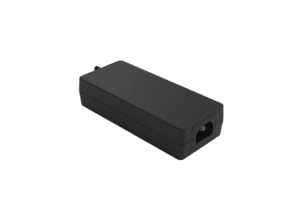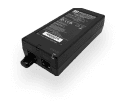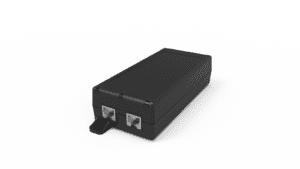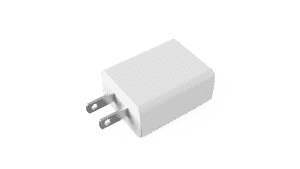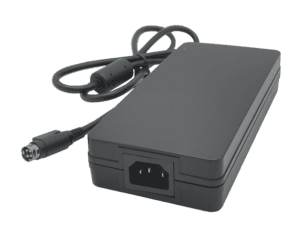BLOG
How to Build a Future-Proof Ethernet Infrastructure: Designing and Implementing a Reliable PoE Network for Modern Businesses
Table of contents

In today’s fast-paced technological landscape, building a future-proof Power over Ethernet (PoE) network is more important than ever. As businesses and organizations increasingly rely on connected devices and smart technologies, the demand for robust, scalable, and efficient network infrastructure continues to grow. Designing a PoE network infrastructure that not only meets current needs but also anticipates future requirements is essential for ensuring long-term success and adaptability.
This guide explores the key considerations for building a future-proof PoE network, including selecting the latest Ethernet standards, choosing the right equipment, and implementing best practices for network design and management. Whether you’re starting from scratch or upgrading an existing network, this article provides the insights and strategies needed to create a reliable and scalable PoE infrastructure that will stand the test of time.
The Importance of Future-Proofing Your PoE Network
Future-proofing your PoE network means designing it to accommodate not only your current needs but also the anticipated growth and technological advancements of the future. As new devices, applications, and standards emerge, your network must be flexible and scalable enough to support them without requiring costly overhauls or replacements.
One of the primary reasons to future-proof your network is to ensure that it can handle the increasing bandwidth and power demands of modern and upcoming PoE devices. As more devices become network-enabled, from security cameras and access points to lighting and building automation systems, your network will need to provide reliable data transmission and sufficient power to support them.
Another key aspect of future-proofing is ensuring that your network infrastructure can adapt to new technologies and standards as they are developed. For example, as PoE standards evolve to deliver higher power levels and faster data rates, your network should be able to support these advancements without significant modifications.
Ultimately, future-proofing your PoE network means investing in the right infrastructure today to avoid costly and disruptive upgrades in the future. By designing a future-proof network, you ensure that your organization is prepared to meet the challenges of tomorrow.
Understanding the Latest Ethernet Standards for PoE
Choosing the right Ethernet standards is a critical step in building a future-proof PoE network. Ethernet standards dictate the maximum data transfer rates, power delivery capabilities, and overall performance of your network infrastructure. The latest standards, such as IEEE 802.3bt, offer significant improvements over earlier versions, making them ideal for modern and future PoE applications.
IEEE 802.3af (PoE): This is the original PoE standard, delivering up to 15.4 watts of power per port. While still used for basic applications like VoIP phones and simple IP cameras, it may not be sufficient for more power-hungry devices.
IEEE 802.3at (PoE+): This standard, also known as PoE+, increases the power output to 25.5 watts per port, making it suitable for more demanding devices such as PTZ cameras, wireless access points, and advanced IP cameras.
IEEE 802.3bt (PoE++): The latest PoE standard, PoE++ (also known as 4PPoE), delivers up to 60 watts (Type 3) or 90 watts (Type 4) per port. This standard is ideal for powering high-consumption devices like LED lighting, digital signage, and advanced building automation systems.
When selecting Ethernet standards for your PoE network, consider the current and future power needs of your devices. Investing in higher-capacity standards like IEEE 802.3bt ensures that your network can support the latest devices and technologies without requiring frequent upgrades.
Selecting the Right Equipment for Your PoE Ethernet Infrastructure
The success of your PoE network depends heavily on the quality and capabilities of the equipment you choose. From PoE switches and injectors to cables and connectors, every component plays a crucial role in ensuring reliable power delivery and data transmission.
PoE Injectors
If your existing network switches do not support PoE, injectors can be used to add power to Ethernet cables. Choose injectors that match the power requirements of your devices and are compatible with the Ethernet standards you’ve selected.
Single Port: Single-port PoE injectors are ideal for powering a single PoE device from a non-PoE switch. They are compact and straightforward, providing power to one device while maintaining the network’s integrity without requiring any additional configuration.
Multiport: Multi-port PoE injectors are designed to support multiple PoE devices simultaneously from a single unit. They are useful for setups where several devices need power and are connected to a non-PoE switch. These injectors offer flexibility and scalability, allowing for efficient power distribution to multiple devices through a single device.
Cabling
Ethernet cables are the lifeline of your PoE network, carrying both power and data to connected devices. Opt for higher-category cables like Cat6a or Cat7 to support faster data rates and higher power levels. Shielded cables may be necessary in environments with high electromagnetic interference (EMI).
PoE Splitters
PoE splitters are used to separate power and data from a single PoE Ethernet cable, providing both to devices that require separate power and data connections. They are beneficial when connecting non-PoE devices to a PoE network.
PoE Extenders
PoE extenders are used to increase the range of PoE networks, allowing you to extend the reach of your Ethernet cables beyond the standard distance limits. They are essential for covering large areas or difficult-to-reach locations.
Designing a Scalable and Flexible PoE Network
Scalability and flexibility are key considerations when designing a PoE network. A scalable network can grow with your organization, accommodating additional devices, increased data traffic, and evolving technologies without requiring major overhauls.
Modular Design: Implementing a modular design allows you to add or upgrade components as needed without disrupting the entire network. This approach is particularly useful for large or complex networks that may require frequent expansions.
Segmented Networks: Dividing your network into segments, such as by department or function, can improve performance and simplify management. Segmentation allows for more granular control over traffic, making it easier to prioritize critical applications and manage bandwidth.
Centralized Management: Using centralized management tools enables you to monitor and control the entire network from a single interface. This makes it easier to identify and address issues, optimize performance, and implement changes across the network.
Future-Proofing Through Virtualization: Virtualization technologies can enhance the scalability and flexibility of your PoE network by allowing you to create virtual networks within your physical infrastructure. This approach enables you to quickly adapt to changing requirements without the need for additional hardware.
Best Practices for Cable Management in PoE Networks
Effective cable management is essential for maintaining the performance, reliability, and longevity of your PoE network. Poor cable management can lead to issues such as signal degradation, power loss, and difficulty in troubleshooting.
Labeling and Documentation: Clearly label all cables and document their routes and connections. This practice simplifies troubleshooting, maintenance, and future upgrades by making it easy to identify and trace cables throughout the network.
Proper Cable Routing: Route cables away from sources of interference, such as power lines or fluorescent lighting, to prevent signal degradation. Use cable trays, conduits, or racks to keep cables organized and protected from physical damage.
Maintaining Bend Radius: Ethernet cables have a minimum bend radius that should not be exceeded to prevent damage to the internal conductors. Avoid sharp bends or kinks in the cables, and use appropriate cable management accessories to maintain the correct bend radius.
Avoiding Overcrowding: Overcrowding cables in trays or conduits can lead to heat buildup and signal interference. Ensure that cables are spaced adequately and not tightly packed together to allow for proper airflow and minimize interference.
Integrating PoE with Smart Building Systems
Integrating PoE technology with smart building systems can significantly enhance the efficiency, control, and automation of building operations. PoE enables the seamless connection and management of various smart devices, such as lighting, HVAC systems, security cameras, and access controls, through a single network infrastructure.
Unified Control and Management: By integrating PoE with smart building systems, you can centralize the control of all connected devices, allowing for more efficient management and real-time monitoring. This unified approach simplifies operations and improves the overall functionality of the building’s infrastructure.
Energy Efficiency: PoE-powered smart building systems can significantly reduce energy consumption by enabling automated controls, such as scheduling, dimming, and occupancy sensing. These features allow building managers to optimize energy use based on occupancy patterns and environmental conditions, leading to lower utility bills and a reduced carbon footprint.
Scalability and Flexibility: Integrating PoE with smart building systems provides the flexibility to add or modify devices without significant changes to the network infrastructure. This scalability ensures that the building’s systems can evolve with changing needs and technologies.
Enhanced Security: PoE integration with smart security systems enhances building safety by providing reliable power to security cameras, access controls, and alarms. In the event of a power outage, PoE systems can continue to operate through backup power sources, ensuring continuous security coverage.
Ensuring Network Security in PoE Infrastructure
Network security is a critical consideration when building a PoE infrastructure, especially as more devices and systems become connected. Securing your PoE network involves implementing measures to protect against unauthorized access, data breaches, and cyber threats.
Securing Network Access: Implement strong authentication protocols, such as multi-factor authentication (MFA), to control access to the network. This ensures that only authorized users and devices can connect to the PoE infrastructure.
Encryption: Encrypt data transmitted over the PoE network to protect sensitive information from being intercepted or tampered with. Use industry-standard encryption methods, such as AES (Advanced Encryption Standard), to secure data communication.
Network Segmentation: Divide the PoE network into segments or VLANs (Virtual Local Area Networks) to isolate sensitive devices and data. This limits the impact of a potential security breach by containing it within a specific segment of the network.
Regular Monitoring and Updates: Continuously monitor the network for signs of suspicious activity or vulnerabilities. Regularly update network equipment with the latest firmware and security patches to protect against known threats.
Phihong’s Role in Advancing PoE Ethernet Infrastructure
Phihong is a leading provider of PoE technology, offering top-quality products that enable businesses to build robust and future-proof Ethernet infrastructures. With a strong commitment to quality, performance, and innovation, Phihong’s products are designed to meet the evolving needs of modern networks.
Phihong’s extensive product portfolio includes PoE switches, injectors, and other network components that support the latest Ethernet standards, such as IEEE 802.3bt. These products are engineered to deliver reliable power and data transmission, even in challenging environments, ensuring that your PoE network operates efficiently and effectively.
In addition to providing high-quality products, Phihong offers expert guidance and support to help businesses design and implement their PoE infrastructure. Phihong’s team of professionals can assist with selecting the right equipment, planning for scalability, and ensuring that the network is secure and future-proof.
Phihong’s commitment to innovation is reflected in its ongoing research and development efforts, which focus on advancing PoE technology and meeting the needs of future networks. By choosing Phihong, businesses can build PoE infrastructures that are not only reliable and efficient but also ready to support the technologies of tomorrow.
Top Tips for Future-Proofing Your PoE Network
Building a future-proof PoE network requires careful planning, the right equipment, and a commitment to staying informed about the latest technologies and standards. Here are some top tips to ensure your PoE network is ready for the future:
- Invest in High-Capacity Equipment: Choose switches, injectors, and cables that support the latest Ethernet standards and can handle future power and data demands.
- Design for Scalability: Plan your network with scalability in mind, using modular components and segmentation to facilitate easy upgrades and expansions.
- Implement Strong Security Measures: Protect your network with strong authentication, encryption, and regular monitoring to safeguard against cyber threats.
- Stay Informed: Keep up-to-date with the latest advancements in PoE technology and standards to ensure your network remains competitive.
- Partner with Experts: Work with experienced providers like Phihong to design and implement a PoE network that meets your long-term needs.
CLIENT'S QUOTE
Phihong's Power-Over-Ethernet solutions have transformed our network, boosting efficiency and reducing costs. Their seamless integration has simplified both installation and maintenance.
Explore More with Phihong USA
As we conclude our exploration of PoE technology, it’s clear that this field is experiencing unprecedented growth. For over 50 years, Phihong has been at the forefront of innovation, serving Fortune 500 companies across various industries as a leading power supply manufacturer for OEMs.
Phihong’s leadership, particularly in advanced technologies like Power over Ethernet, extends to active contributions in the development of IEEE PoE standards. This involvement underscores our commitment to innovation and dedication to providing cutting-edge power solutions that will shape the future of technology.
In addition to custom power supply solutions, Phihong offers a diverse range of products, including:
- Power over Ethernet (PoE) Solutions: PoE injectors, splitters, media converters, and more
- AC/DC Adapters and Power Supplies: USB adapters, desktop adapters, industrial-grade power supplies, and more
- Battery Chargers: Chargers for lithium-ion and lead-acid batteries
- Medical Power Supplies: Specialized power supplies that meet stringent healthcare requirements
By partnering with Phihong USA, you are choosing a trailblazer in power technology. If you’re an OEM looking for a custom PoE solution or just looking for a quality product, call us today: 510-445-0100 or email us at usasales@phihongusa.com. We look forward to collaborating with you.

Contact Our Team Today!
Our dedicated sales team and international partners are prepared to support you with your latest projects and initiatives globally.
What are the key considerations when building a future-proof PoE network?
When building a future-proof PoE network, several key considerations should be taken into account to ensure the network can meet current and future demands. Scalability is one of the most important factors, as the network should be designed to accommodate growth and technological advancements without requiring major overhauls. This involves selecting modular components, planning for future expansions, and using higher-capacity equipment that can support increased data traffic and power needs. Compatibility with the Latest Standards: Another critical consideration is ensuring compatibility with the latest Ethernet standards, such as IEEE 802.3bt, which offers higher power delivery and faster data rates. Choosing equipment and cabling that support these standards will help future-proof the network and ensure it can handle the demands of modern and upcoming PoE devices. Network Security: As the number of connected devices increases, so does the risk of cyber threats. Implementing strong security measures, such as multi-factor authentication, data encryption, and network segmentation, is essential for protecting the network from unauthorized access and data breaches. Centralized Management: Utilizing centralized management tools can greatly enhance the efficiency and reliability of the PoE network. These tools allow for real-time monitoring, troubleshooting, and optimization of the network, making it easier to maintain and scale over time. Environmental Considerations: Finally, the physical environment in which the network is deployed should be considered. Factors such as electromagnetic interference (EMI), temperature, and physical space can impact the performance and reliability of the PoE network. Selecting appropriate cabling, shielding, and cooling solutions can help mitigate these challenges and ensure the network’s long-term success.
How do the latest Ethernet standards impact PoE network performance?
The latest Ethernet standards, such as IEEE 802.3bt, have a significant impact on the performance and capabilities of PoE networks. These standards dictate the maximum power delivery and data transfer rates that the network can support, which in turn affects the types of devices and applications that can be deployed. Increased Power Delivery: IEEE 802.3bt, also known as PoE++, allows for up to 90 watts of power to be delivered per port, enabling the use of more power-hungry devices such as high-definition security cameras, LED lighting, and advanced building automation systems. This increased power capacity allows for a broader range of applications and makes PoE technology more versatile. Faster Data Transfer Rates: In addition to higher power levels, the latest Ethernet standards also support faster data transfer rates, which are essential for high-bandwidth applications like video streaming, large file transfers, and real-time data processing. This ensures that the network can handle the increased data traffic generated by modern devices without experiencing bottlenecks or latency issues. Enhanced Efficiency: The latest standards also improve the efficiency of PoE networks by reducing power loss and minimizing voltage drop over long cable runs. This results in more reliable power delivery and better overall network performance, even in demanding environments. Future-Proofing: By adopting the latest Ethernet standards, organizations can future-proof their PoE networks, ensuring they can support upcoming technologies and devices without needing significant upgrades. This not only enhances the network’s longevity but also provides a higher return on investment by reducing the need for frequent replacements or overhauls.
What are the benefits of integrating PoE with smart building systems?
Integrating PoE with smart building systems offers numerous benefits, including enhanced efficiency, centralized management, and increased flexibility. Energy Efficiency: One of the primary benefits of PoE integration is the ability to optimize energy use through advanced control features like scheduling, dimming, and occupancy sensing. By powering and managing devices such as lighting, HVAC systems, and security cameras through a single network, building operators can reduce energy consumption and lower utility costs. Centralized Management: PoE allows for centralized control of all connected devices, enabling real-time monitoring and management through a single platform. This simplifies building operations and improves the overall efficiency of the infrastructure. For example, building managers can adjust lighting levels, monitor security cameras, and control HVAC systems from a single interface, making it easier to maintain optimal building conditions. Scalability and Flexibility: PoE’s ability to deliver both power and data over a single Ethernet cable makes it easier to add or modify devices as needed. This scalability is particularly beneficial in dynamic environments where building layouts or occupancy levels frequently change. PoE-powered devices can be easily reconfigured or relocated without the need for additional wiring or power outlets. Enhanced Security: PoE integration with smart security systems provides reliable power to security cameras, access controls, and alarms, ensuring continuous operation even during power outages. This enhances building safety and security by maintaining critical systems when they are needed most. Reduced Infrastructure Costs: By consolidating power and data delivery into a single network, PoE reduces the need for separate electrical wiring, outlets, and power supplies. This simplifies installation, reduces material and labor costs, and minimizes the overall complexity of the building’s infrastructure.
How does Phihong support the development of future-proof PoE networks?
Phihong is a leading provider of PoE technology, offering a comprehensive range of products and solutions designed to support the development of future-proof PoE networks. Innovative Products: Phihong’s product portfolio includes PoE switches, injectors, and network components that support the latest Ethernet standards, such as IEEE 802.3bt. These products are engineered to deliver reliable power and data transmission, ensuring that PoE networks operate efficiently and effectively in any environment. Phihong’s commitment to quality and performance is reflected in the durability and reliability of its products, making them a trusted choice for building robust network infrastructures. Expert Guidance: In addition to providing high-quality products, Phihong offers expert guidance and support to help businesses design and implement their PoE infrastructure. Phihong’s team of professionals can assist with selecting the right equipment, planning for scalability, and ensuring that the network is secure and future-proof. This personalized support helps businesses build networks that meet their current needs while being ready to accommodate future growth and technological advancements. Ongoing Research and Development: Phihong is actively involved in research and development efforts aimed at advancing PoE technology and meeting the needs of future networks. By staying at the forefront of technological advancements, Phihong ensures that its products remain cutting-edge and capable of supporting the most demanding applications. This commitment to innovation positions Phihong as a leader in the PoE industry and a valuable partner for businesses looking to build future-proof networks. Customized Solutions: Phihong understands that every business has unique needs and challenges. To address this, Phihong offers customized PoE solutions tailored to the specific requirements of each customer. Whether it’s a large-scale commercial installation or a small retrofit project, Phihong provides the expertise and resources necessary to ensure the success of the network.

